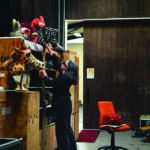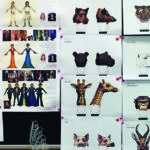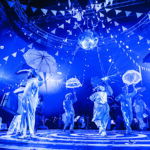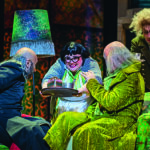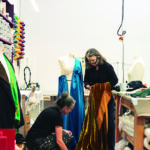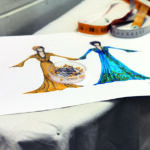All the world’s a stage: Award-winning designer Tracy Grant Lord in her element
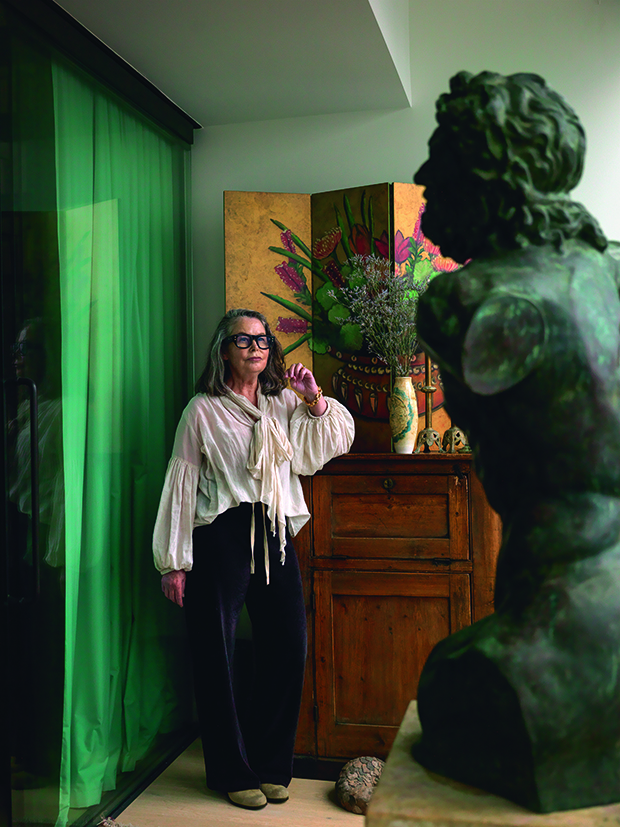
The balcony-cum-breakfast nook in Tracy Grant Lord and her husband David’s apartment is a spot for Tracy to watch the city stir to life each morning. She’s standing in front of the bust of a statue that sat in the garden of Manurewa’s historic Orford Lodge, which the couple once owned.
Actor’s monologue, touring opera or recounting a story over coffee… Tracy Grant Lord always sets the scene.
Words: Sarah Templeton Photos: Jane Ussher
Tracy Grant Lord has an expert perspective on perspective. After all, it’s what makes a stage. The country’s leading scenographer, set and costume designer for opera, ballet and theatre is behind the razzle and dazzle of some of the most celebrated shows here and abroad.
She has worked with the Royal New Zealand Ballet, the Auckland Theatre Company and New Zealand Opera. Over the ditch, she has set the stage for the Australian Ballet and the Sydney, Melbourne and Queensland Theatre Companies.
- The walls and shelves of New Zealand Opera headquarters in Parnell are covered in references and props from shows past.
It’s been almost 30 years of masks, mouldings, costumes and composition. Always, the viewer’s perspective is vital. “It’s about colour, texture and layers, about knowing how to fill the space appropriately and making sure the spaces are different,” she says.
“Different auditoriums have a different relationship with the performance space and audience. So, it’s about knowing the physics of the rooms you’re working in. What sort of angle will the audience be viewing it at? Are they going to see the floor? Are they going to be looking at the back of the stage? That’s the starting point.”
She is one of the busiest women in the business, but she still puts on a spread to warm a rainy Auckland autumn morning in the apartment she shares with her husband, David Lord. Coffee, pastries and some truly stand-out scones, picked up from a shop 10 minutes up the road.
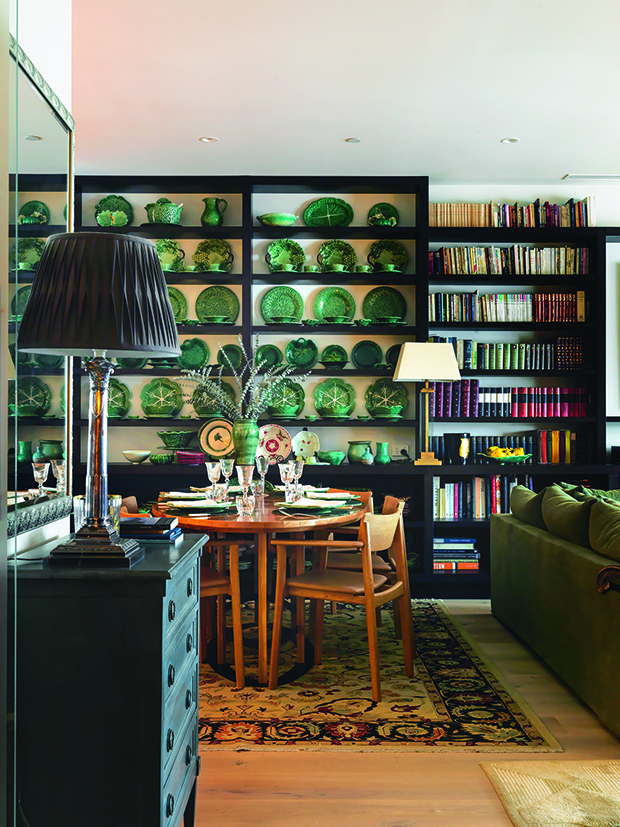
A “pretty grunty’ custom Apartmento cabinet makes the room appear bigger. It houses the green Cabbage Ware collection from which much of the décor takes its colour cues. The cabinet also contains David’s collection of language books and classical CDs.
The catering is unexpected and appreciated given the busyness of her afternoon — and, indeed, her year. Thanks to pandemic pauses, Tracy has three consecutive shows this season. That is not so unusual. What is, is that they are all with the same company.
In an eclectic lineup of works with the New Zealand Opera, she has designed an operatic telling of 2019’s The Unruly Tourists saga and a revolving stage for Mozart and Da Ponte’s Così fan tutte. Now she is working on a reimagining of the Greek methodology of Orpheus with director and choreographer Neil Ieremia.
- Scenes from productions of The Barber of Seville and The Unruly Tourists. “They’re all favourites, and very, very different. Each is handmade, so it’s not like you’re recreating something each time” (The Unruly Tourists: Andi Crown)
- The Barber of Seville: David Rowland
(m)Orpheus was to hit the stage in September 2021.
“I’m very excited to come back and do these shows — and one of the benefits of the level of planning involved is you have time to get things made. You have the chance to get things done that look impressive on stage,” she says.
“So, we’re not just going: ‘Here’s a black chair.’ You can build a world.”
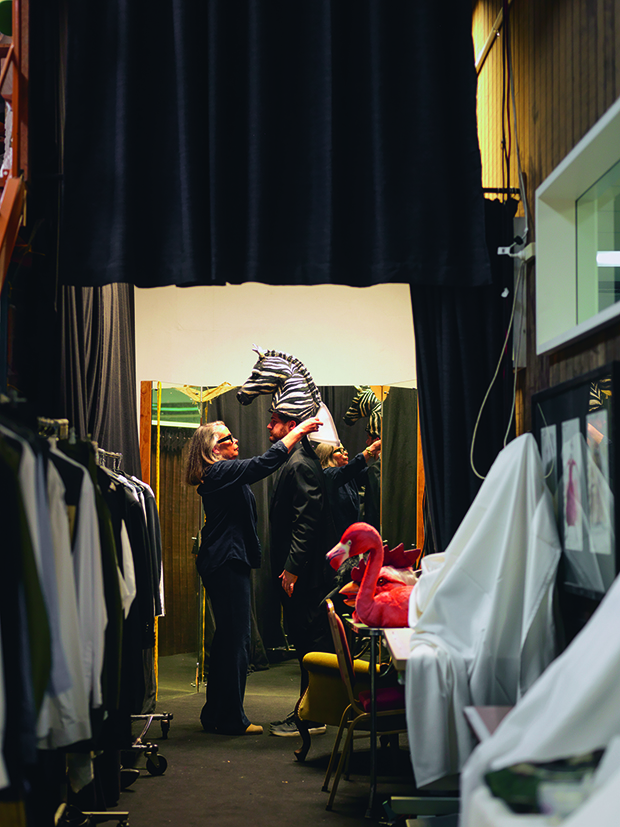
Anyone headed for a show designed by Tracy Grant Lord probably won’t be expecting a single chair. She doesn’t love to chat about her accolades — when the subject is broached, she throws up her hands in embarrassment, as if nominations for Helpmann and Olivier Awards are too silly to chat about. Here too, perspective is key. She says the real reward is a career where she can continually innovate.
“Getting older is fantastic,” she says. “The energy never stops, the passion never stops, and the depth of experience enriches where you go next.”

The couple first thought of their apartment at The International on Auckland’s Princes Street as small. They have changed their minds now that it’s furnished with their often-sizeable furniture.
Trust in her track record grants a magnification of opportunities as the years pass. “There’s now a confidence there — not just in me, but the whole team. The crew, stage management, the builders… and when we get into the theatre and have everyone working on the show, it’s a process I love.”
That process begins over a year before rehearsals start. Tracy tries to finish the text on the first read, yet inevitably reaches for her notebook to sketch and take notes. “I find these initial raw and intuitive responses to text to be very true to the intention of the work,” she says. “If there is a score with the work, I will let that wash over more fully and absorb it while I read. After this stage, I will start drilling down on the more pragmatic responses to the work and its place for the audience.”
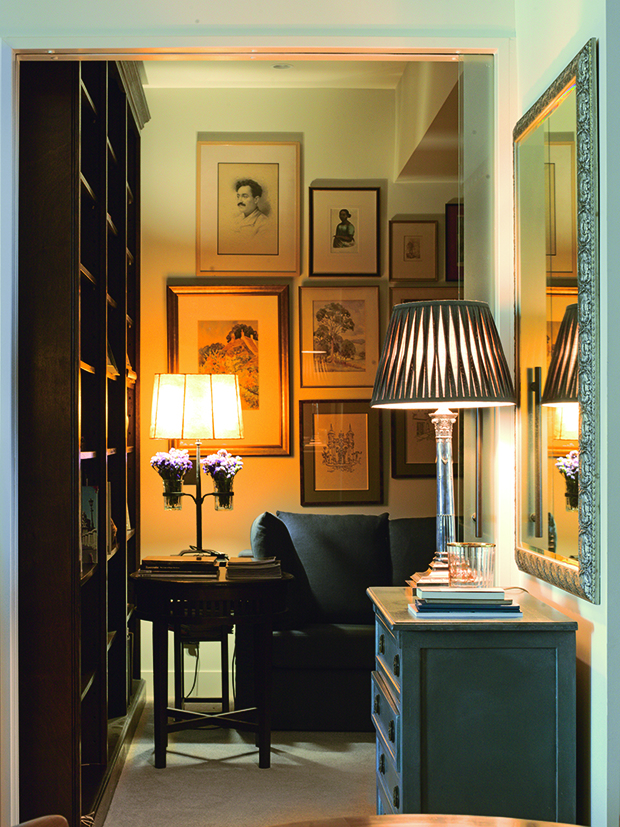
While The International has a communal library for residents, the couple’s own has shelves lined with fiction and a cosy sofa that doubles as a pull-out bed for guests.
Design meetings with directors, choreographers and lighting designers take place up to six months before rehearsals start, and everyone involved checks in at least once a fortnight. Nothing is repeated from one show to the next. Each is bespoke, thanks to hours spent hand-crafting set dressings and costumes.
This afternoon, she is heading to New Zealand Opera headquarters in Parnell, where she and the stage-building team will be up ladders, measuring mannequins, and buried in backrooms. Even at this point in a decades-long career, upskilling on a stage-typical shoestring is vital.
“A lot of people get attracted to the industry. But you have to be resourceful and know how to paint, model and make.
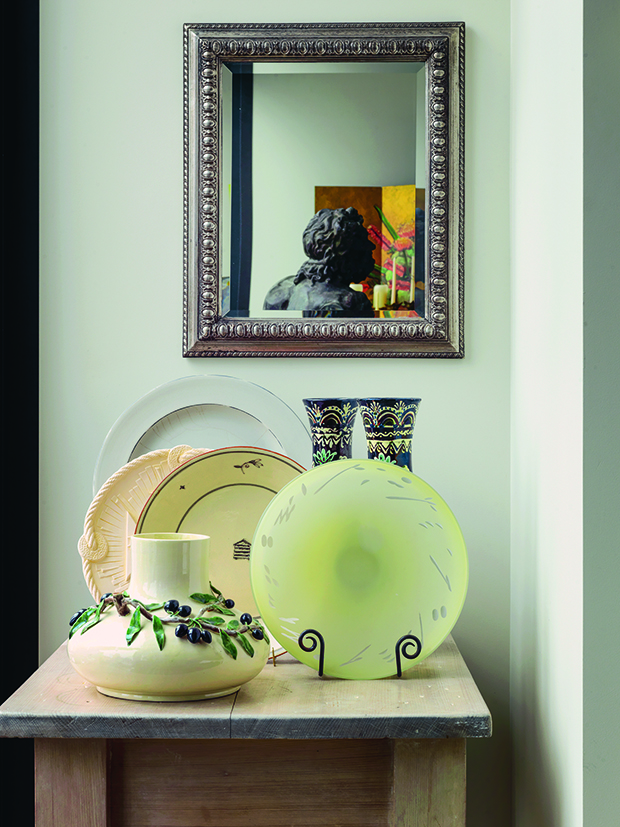
Collections from travels abroad add character to a relatively new building.
“The money — you know it’s never enough. But it is chunky chips of change — it has to be spent right so it looks amazing. Stuff always must look more expensive than it is. And that keeps you viable: turning your hand and saying, ‘Look, I’ll give it a go’, trying out new ways of doing things without spending a million dollars on it.”
This approach has been a hallmark of her career, which began almost when she left high school. Art school didn’t appeal; architecture seemed too clinical. But an introduction to the Students Arts Council during university orientation opened the door to the idea that the world of performing arts might be the way to go — and that there were professional theatres around the country in need of staging talents.
A turn at Centrepoint Theatre in Palmerston North led to a job at Auckland’s iconic Mercury Theatre, off Karangahape Road. There, she spent 10 years in an “apprenticeship”, which is how she refers to a series of roles, including associate director. Mercury was known for tackling classic works, musicals, dance and experimental new plays.
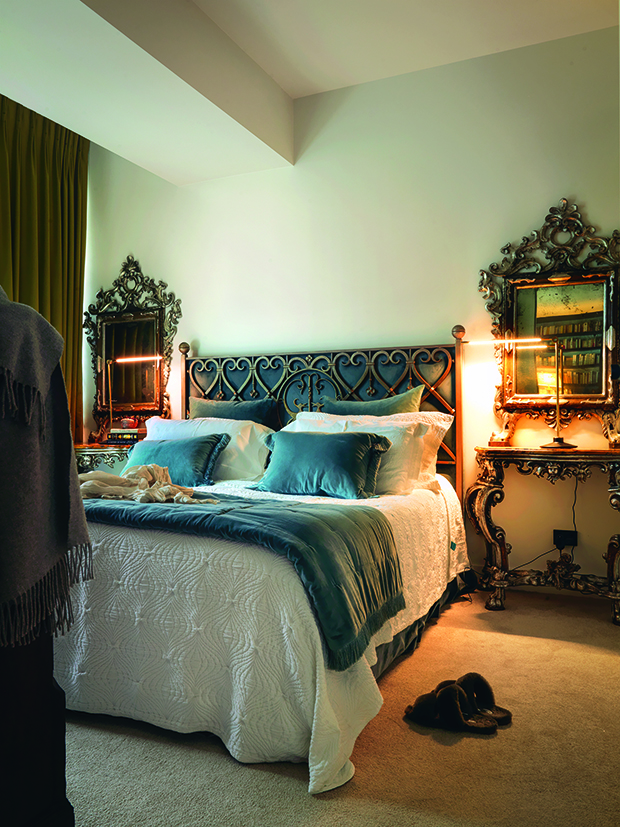
Items from a mix of eras and countries are artfully placed. “I like clean lines. It doesn’t matter the era, whether modern, mid-century or renaissance,” says Tracy.
“So that’s where I learned my skills, my craft… We all got the chance to work across a big spectrum, and that is where I got my toolkit. I think that learning on the job is an excellent thing. It’s two-fold: you can work on actual shows with actual people and make actual mistakes, and then it’s exponential after that — you’re either cut out to do it, or you’re not.”
Thankfully, or “luckily”, as Tracy affirms, she was cut out for it. She went on to become an independent freelancer in set and costume design, with one foot in New Zealand and the other in Australia, working with state theatre companies in Melbourne and Sydney. As the performing arts industry declined in New Zealand, it was thriving in Oz. The work was bigger, better and more resourced.
“In Australia, I’d work for these companies that had amazing paint shops, millinery departments and dye shops, and I’d come back here, and I’d go, ‘Where is it all?’” she says. “And they go, ‘Come on, Tracy’… and so I’d say, ‘Come on, let’s do it ourselves.’ It kept me engaged and excited about wanting to get better.”
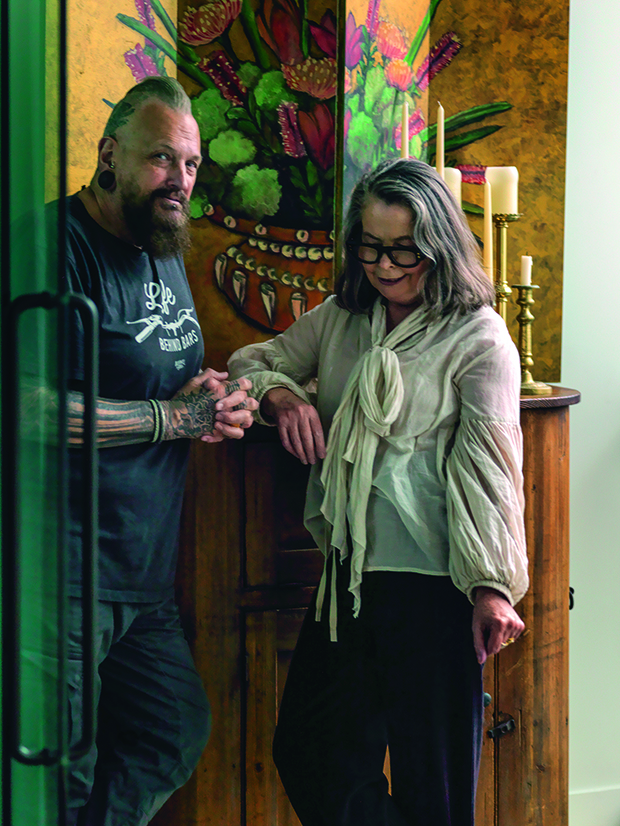
David and Tracy recently celebrated their 20th wedding anniversary.
Sydney was also where she met her now-husband, language expert and translator David Lord. The two connected at a pre-show party thrown by Tracy’s sister at a hotel near the Opera House in the 1990s. They have been married for two decades.
David, who’d lived in cities worldwide, including Paris and Sydney, was happy to accompany Tracy home to New Zealand. They lived and worked for 22 years “a little southside” in Manurewa’s Orford Lodge, a historic homestead Tracy calls “the big house”.
But after more than two decades, the isolation lost its shine. They missed the vibrancy of the city, and Orford was sold.
Tracy and David now live at The International, an apartment complex near Albert Park in Auckland’s central city. They decided to move just before the pandemic, which as with work, slowed the process. But their hearts were set on the modern building at the top of Princes Street; they fell for its architecture, proportions and quality of living.
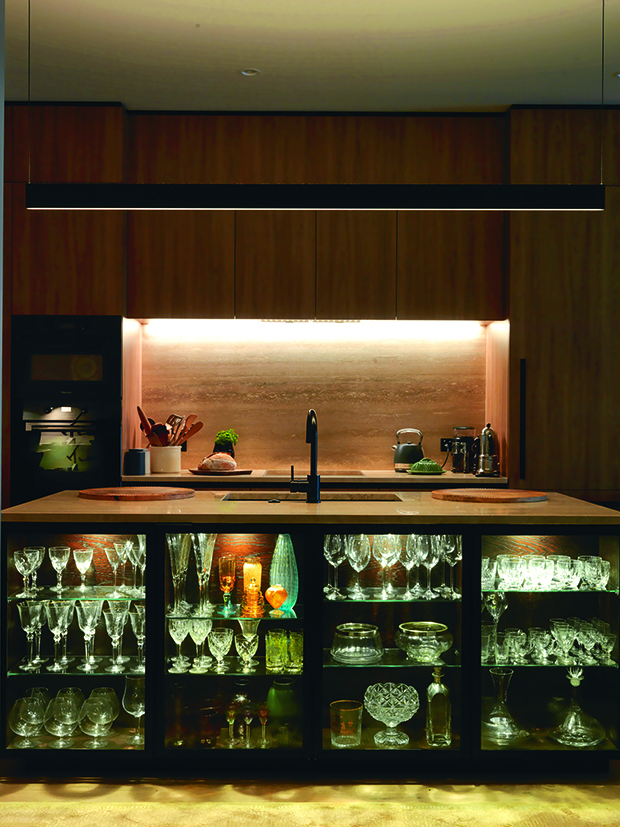
The kitchen island houses a large vintage glassware collection.
Tracy says, on first viewing, they thought their apartment was small. But now, thanks to an owner well-versed in the prescriptive nature of perspective, it feels anything but. It’s filled with beloved bits and bobs from the “big house”, including a vintage sideboard stocked with wine, which appears to have been custom-built for the space (it wasn’t).
A bust of a Greek god that once belonged to David’s sister poses on the balcony with his back to the city. A large custom shelving unit is packed with David’s language books and items the couple picked up on trips abroad.
“I’m a magpie,” says Tracy. Surveying the room, she determines there’s still space to be filled, including a void over the dining table where she wants to put “something beautiful”. The room that remains relatively clear is her studio. “I don’t want much on my walls in my studio because I don’t want my brain to be too full.”
But collections line the walls in the living area, including a striking green set of Portuguese green Cabbage Ware, which takes up six rows of shelves. “One of David’s languages is Portuguese, so we’ve visited Portugal several times. But when we first got together, we spent some time there, and that’s how that collection came about — over about three trips.”
From a visitor’s perspective, it’s an impressive grouping. But like stages constructed with audience eye tricks and handmade articles, it’s an ode to an expert’s hand in making the inexpensive seem otherwise. “It a very common Portuguese design — really cheap. You’re picking up cups and saucers for $1.50. But when you put it all together, it just looks beautiful.”
NOTES ON (m)ORPHEUS
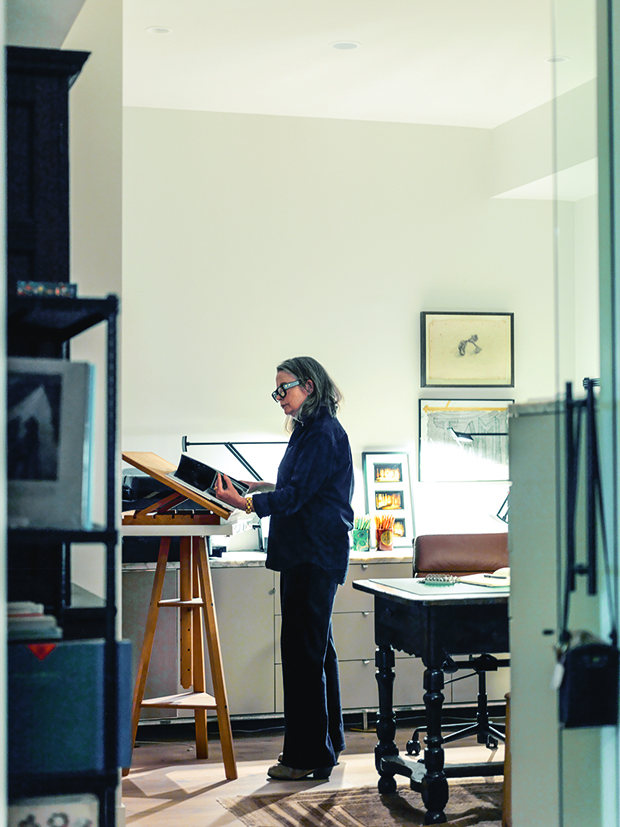
She sketches, plans and makes models of upcoming stages, is the one room in her apartment with relatively unadorned white walls.
Tracy’s current project is (m)Orpheus, a contemporary retelling of Christoph Gluck’s 18th-century masterpiece Orpheus and Eurydice, directed by choreographer and Black Grace founder Neil Ieremia.
“Neil is one of the extraordinary people I get to work with,” says Tracy. “I’ve known him many years.” The two have worked on the same ballet and musical projects over the years, but this show marks their first proper collaboration.
“We’ve been going, ‘Oh, my God, I can’t believe it’s taken this long.’ So we went into it working together: me exploring his particular way of working and vice versa. We’ll create this world that will amplify our work in a new way — which is what the opera company wants to do.”
- New Zealand Opera has an extensive wardrobe department.
- Sketches give clues to where the fabrics may end up.
The show features baritone Samson Setu and soprano Deborah Wai Kapohe as Orpheus and Eurydice, Black Grace dancers and a reorchestrated musical score from composer and percussionist Gareth Farr.
“This country is exploring where we can go and who we are in the performing arts. I couldn’t have lucked out more — the timing is so perfect,” says Tracy.
The New Zealand Opera’s production of (m)Orpheus will show at ASB Waterfront Theatre, Auckland, from 6 to 10 September 2023, and Wellington’s Opera House from 20 to 23 September 2023.
MAGIC MANIFESTATION: TRACY’S SET-DESIGN CHECKLIST
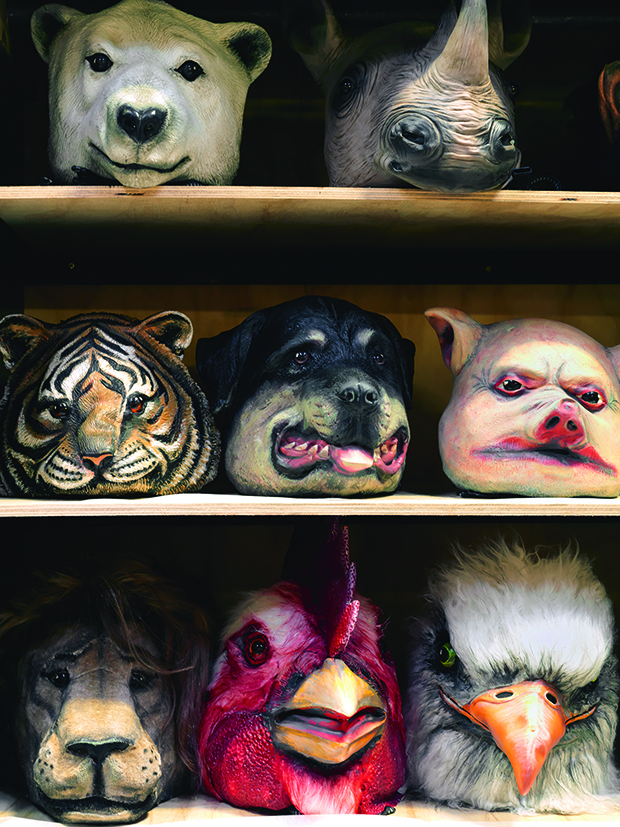
“If I’m teaching young design students and they say, ‘Where do you start?’ I say, ‘Well, it’s all about serving,” says Tracy.
First: “You’re serving the original makers of the work. The librettist, the composer, the writer, the dramatist — the idea that they sowed when they made the work.”
Second: “The next service is to the performer. And it’s about making that performer feel like they can do their best job.”
Third: “And then the third service is to the audience so they have the best experience.
“So, you set that all up. And then you say, ‘Okay, you have to make the director happy, and all of that,’ but that kind of falls into place anyway.”
Love this story? Subscribe now!
 This article first appeared in NZ Life & Leisure Magazine.
This article first appeared in NZ Life & Leisure Magazine.
